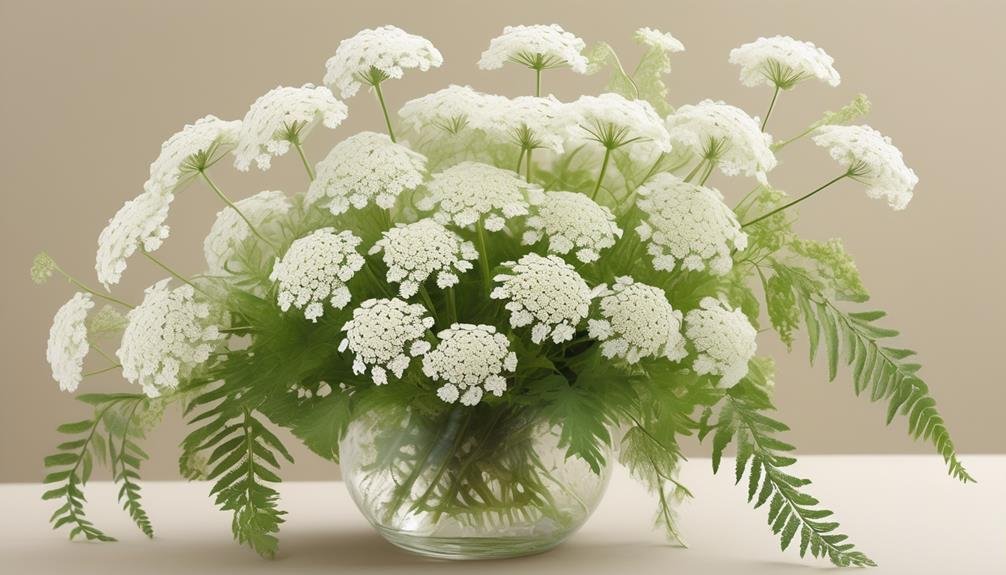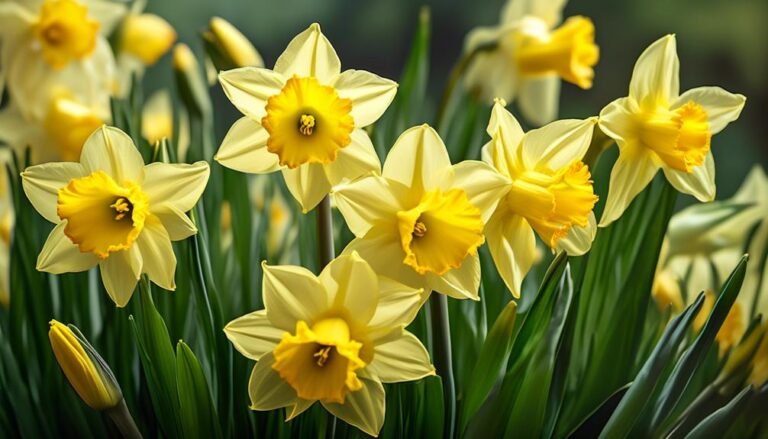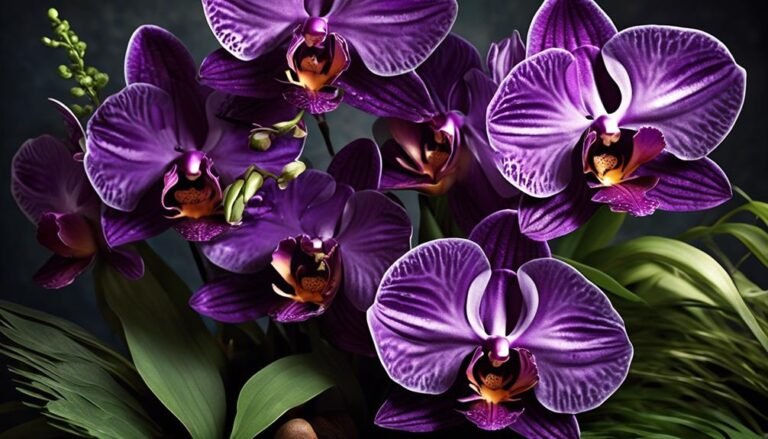Popular Types of Florist Flowers – Queen Anne's Lace
Queen Anne's Lace, also known as Daucus carota, is a popular florist flower that adds an elegant touch to floral arrangements and bouquets. This delicate and lacy flower is more than just a roadside wildflower, and exploring its details can offer surprising insights into its charm.
- Scientific Name and Origin
- Queen Anne's Lace is scientifically known as Daucus carota and belongs to the Apiaceae family. It is native to Europe and parts of Asia but has naturalized in many other regions, including North America.
- Characteristics
- This flower is characterized by its lacy white umbels, which give it a delicate and intricate appearance. The plant can grow up to 4 feet tall and is often found in fields, along roadsides, and in meadows.
- Care Requirements
- Queen Anne's Lace is a hardy and low-maintenance flower, making it a favorite among florists. It thrives in full sun to partial shade and well-drained soil. Once cut, it can last up to a week in a vase with fresh water.
- Floral Design Uses
- Florists often use Queen Anne's Lace to add texture, depth, and an organic feel to arrangements. It pairs well with roses, lilies, and other popular flowers, adding a touch of whimsy and elegance to bouquets.
- Symbolism and Folklore
- In folklore, Queen Anne's Lace is associated with femininity, delicacy, and intricate beauty. It is also said to represent sanctuary and protection, making it a meaningful addition to wedding bouquets and floral displays.
In conclusion, Queen Anne's Lace is a versatile and charming flower that brings elegance and a touch of the wild to floral designs. Its delicate appearance and rich symbolism make it a beloved choice for both professional florists and gardening enthusiasts.
Scientific Name
Queen Anne's Lace, scientifically known as Ammi visnaga, belongs to the Apiaceae family.
The genus classification of Ammi visnaga provides a systematic way of categorizing this plant based on shared characteristics with other species within the Ammi genus.
The species visnaga specifically refers to Queen Anne's Lace, and understanding the etymology of scientific names, such as Ammi visnaga, is crucial in the field of botany as it allows for clear identification and classification of plant species.
The scientific name Ammi visnaga is widely used in botanical and academic contexts, serving as a unique identifier for the plant and linking it to its taxonomic relatives within the Ammi genus.
This name enables effective communication about specific plant species among botanists, researchers, and florists, eliminating ambiguity that can arise from using common names which may vary regionally or culturally.
Background History
Queen Anne's Lace, also known as wild carrot, has a rich history and cultural significance. According to folklore, the flower is associated with Queen Anne of England, a skilled lace maker, and it's said that a drop of her blood fell onto the lace, creating the dark purplish floret at the flower's center. This legend has contributed to the flower's association with delicate beauty and intricate lace-like patterns.
In addition to its folklore, Queen Anne's Lace has been used for various purposes throughout history. It has been utilized in herbal medicine for its diuretic and anti-inflammatory properties. The flower is also symbolic in weddings and ceremonies, where it's included in bouquets and floral arrangements to represent sanctuary, safety, and refuge.
Queen Anne's Lace's enduring presence and cultural significance make it a beloved floral species, valued for its beauty and resilience. With its intricate folklore and diverse uses, it continues to captivate people around the world.
Physical Description
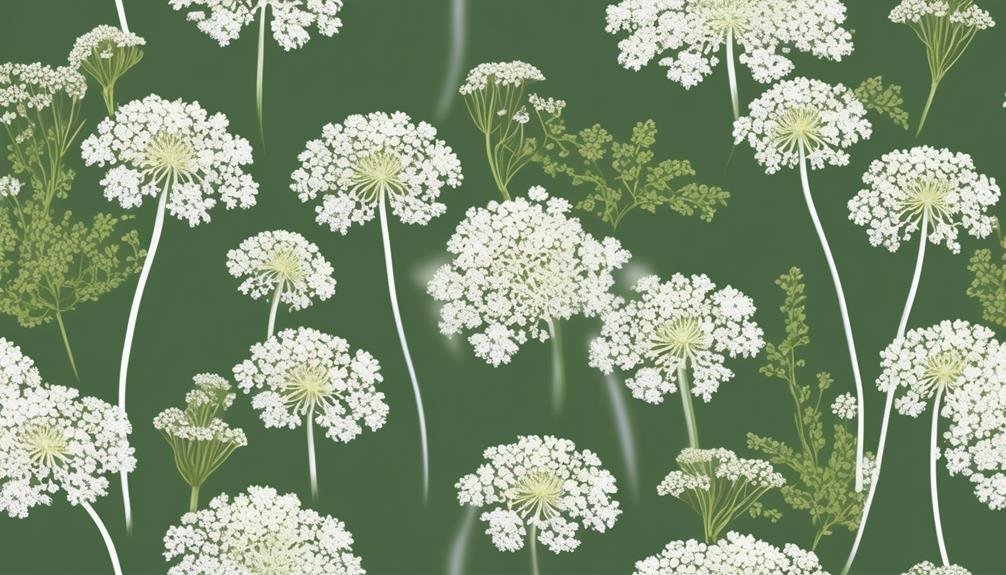
Queen Anne's Lace, also known as wild carrot, is a hardy annual plant with intricate lacy flower heads in a crisp green-white color. It typically reaches a height of 48 to 65 inches and thrives in full sun, with a maturity period of 90 to 110 days. The flower heads are made up of numerous tiny, delicate, lacy clusters, creating a stunning and intricate appearance. When used in floral arrangements, Queen Anne's Lace adds a touch of ethereal beauty and elegance, making it a popular choice for bouquets and centerpieces.
Symbolically, Queen Anne's Lace is associated with sanctuary and protection. Named after Queen Anne of England, the flower is linked to themes of femininity, delicacy, and intricate beauty. In some cultures, it's also seen as a symbol of sanctuary and has been used in various rituals and ceremonies to provide protection. Understanding its physical characteristics and symbolism can greatly enhance the artistry and depth of floral arrangements.
Colours and Characteristics
Queen Anne's Lace, with its delicate green-white color, adds a lacy and intricate appearance to floral arrangements. It's commonly used as filler in bouquets and centerpieces, bringing a touch of elegance and delicacy to the overall display.
- Uses in floral arrangements: Queen Anne's Lace is a versatile filler flower, adding a delicate and lacy texture to bouquets and centerpieces.
- Symbolism and meanings: This flower is associated with sanctuary, protection, and femininity, making it a meaningful addition to wedding bouquets and garden landscapes.
The plant's height ranges from 48 to 65 inches, making it a versatile addition to garden landscapes. Its distinctive appearance and beautiful smell make it a charming addition to gardens and floral creations.
When picked, Queen Anne's Lace has a vase life of 6 to 8 days, adding longevity to floral displays. This makes it a practical choice for both professional florists and home gardeners looking to create long-lasting and visually appealing floral arrangements.
Varieties Available
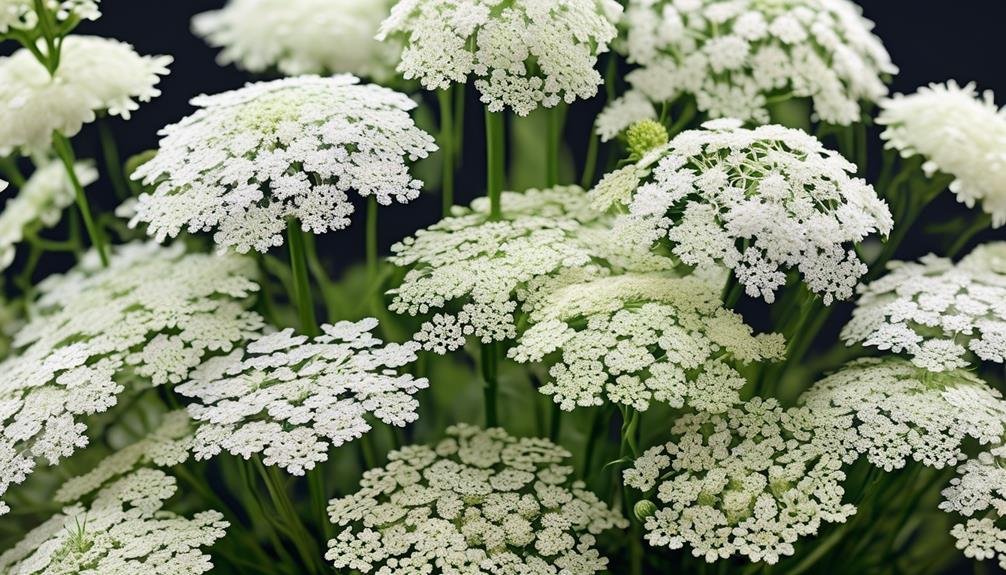
Anthriscus Sylvestris, also known as Wild Beaked Parsley, is a European and Asian native plant closely related to Queen Anne's Lace. Its delicate and lacy blooms add a wild, natural charm to bouquets and serve as beautiful filler in centerpieces.
Symbolically, this variety represents protection and sanctuary, much like Queen Anne's Lace, and embodies the beauty of the wild and untamed.
With its unique characteristics, Anthriscus Sylvestris is a meaningful choice for various occasions.
Seasonal Availability
Queen Anne's Lace is typically available during the warmer months, peaking in the summer and early fall. To extend its availability, consider drying or preserving the flowers. You can also explore sourcing Queen Anne's Lace from different geographical locations to take advantage of varying bloom times.
Seasonal flowers like Queen Anne's Lace offer a fresh and natural appeal to floral arrangements, enhancing the overall aesthetic. They also provide a closer connection to nature and the environment, reflecting the current time of year and local surroundings.
Incorporating seasonal flowers into arrangements allows for a deeper connection to the natural world.
Care Tips
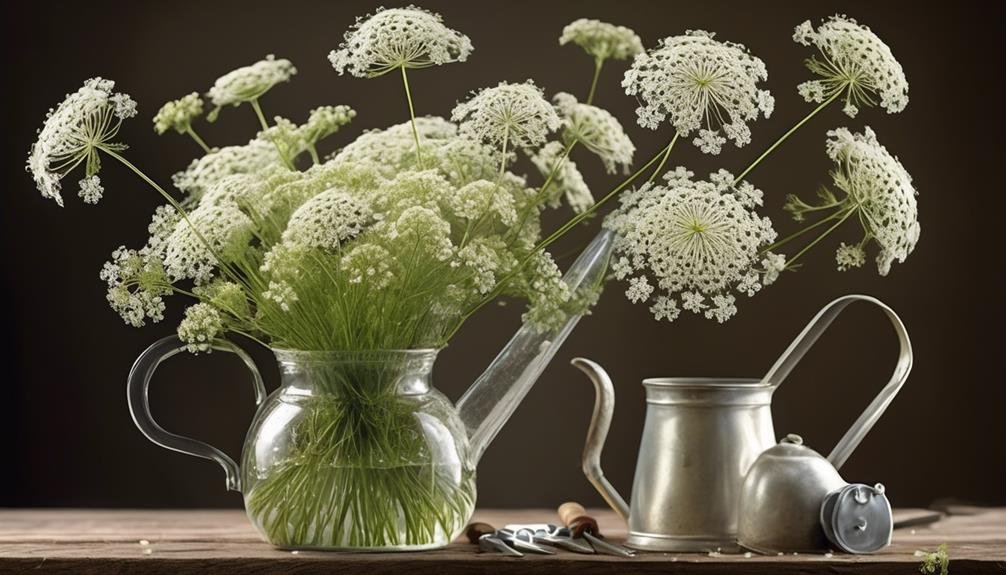
Queen Anne's Lace, also known as wild carrot, thrives in a dry environment with full to semi-full sun and moderate to low humidity. It prefers well-draining clay and loam mixed soil with slightly acidic pH.
The most effective method for propagating Queen Anne's Lace is through seed sowing, ideally in the fall to allow for natural stratification during the winter months, enhancing germination in the spring. Keeping the soil consistently moist during the germination period is crucial.
Regular deadheading, which involves the removal of spent flowers, promotes continuous blooming and prevents self-seeding, which can lead to the plant becoming invasive.
Pruning the plant back to ground level in the late fall encourages new growth in the following spring and helps maintain its shape and prevent it from becoming leggy.
These tips will ensure that your Queen Anne's Lace thrives and remains a beautiful addition to your garden or floral arrangements.
Conclusion
Queen Anne's Lace, also known as Ammi Majus, is a popular florist flower native to Europe. It's a delicate and beautiful addition to floral arrangements and wreaths. This flower is associated with a sense of sanctuary, making it a meaningful choice for special occasions.
Queen Anne's Lace thrives in dry environments and is known for its hardy nature, making it a long-lasting and resilient option for gardens and floral displays. Its intricate, lacy blooms add a touch of elegance to any setting.
With its versatility and enduring appeal, Queen Anne's Lace is a beloved choice for florists and gardeners alike.
